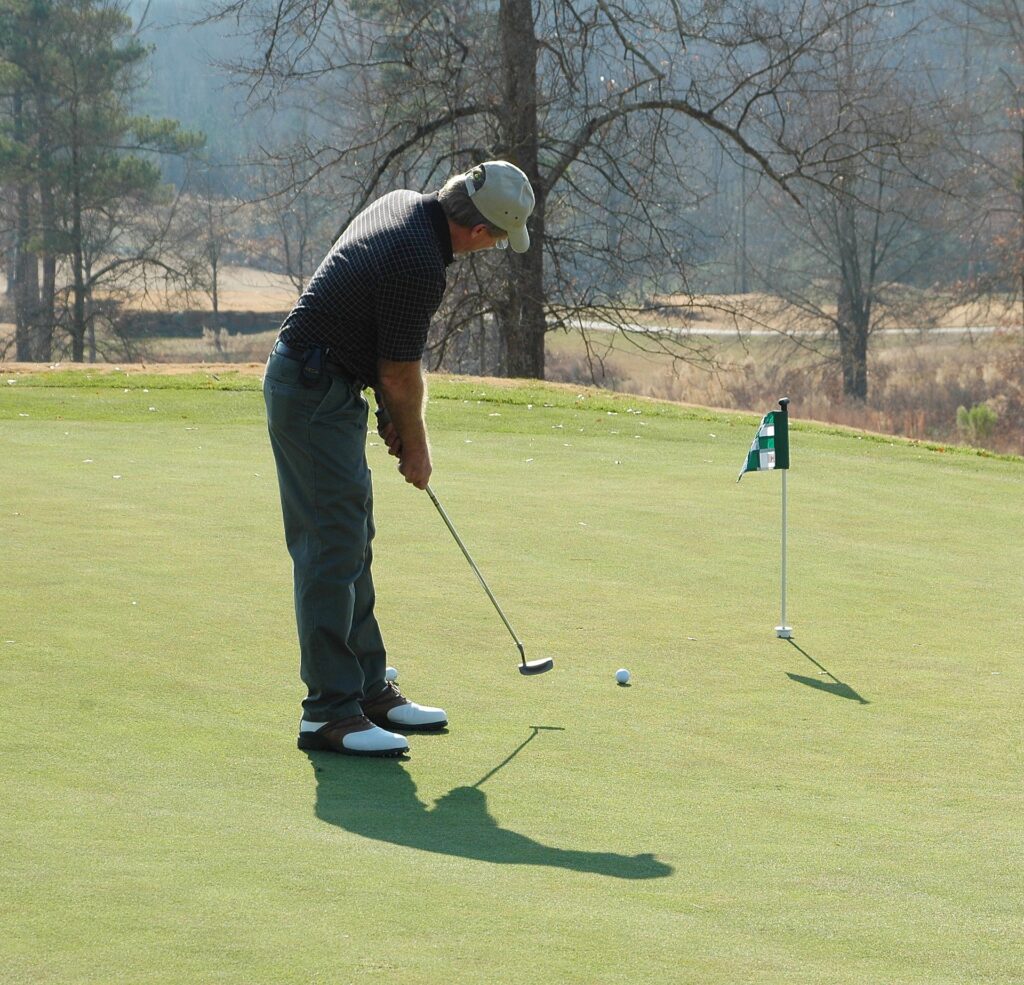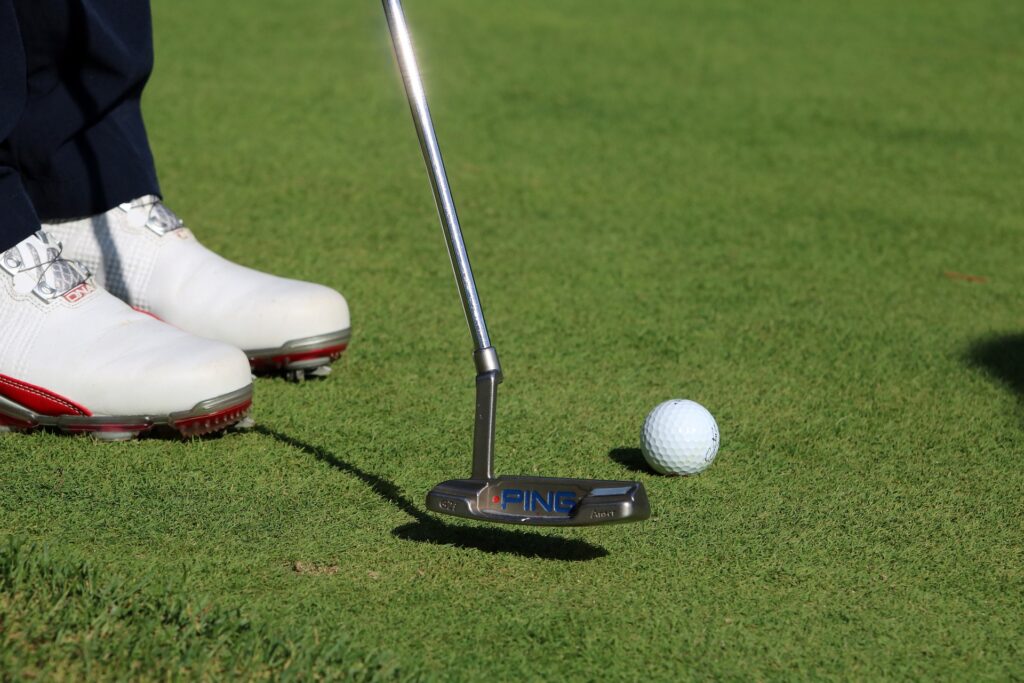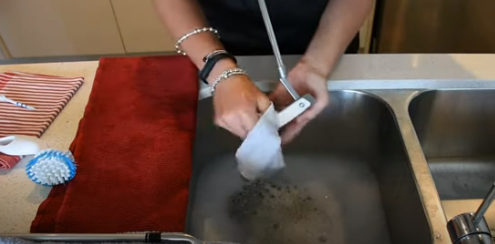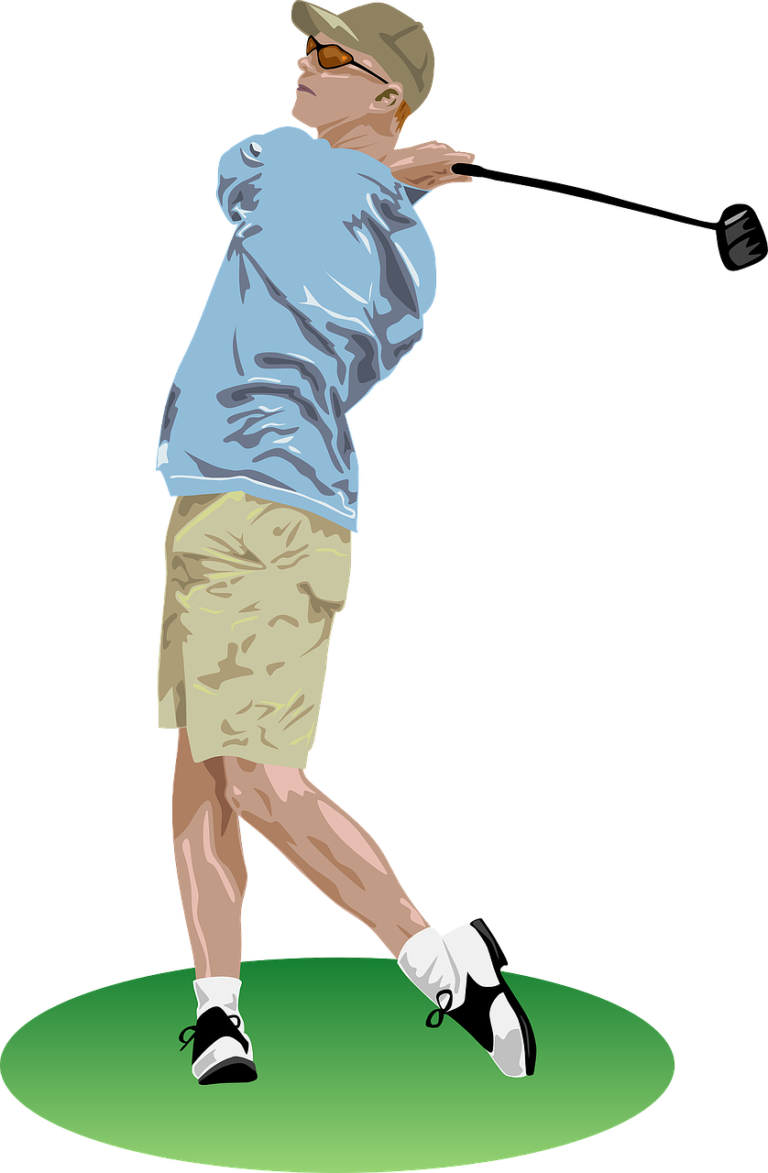Putting tips for high handicappers.
High handicappers, this one is for you! Are you consistently struggling with your putting game? Fret not; we’ve all been there.
These incredibly insightful putting tips for high handicappers can make a significant difference in your putting game.
High handicappers are those who have a handicap of 18 or higher, indicating they require more strokes to complete a hole than a low-handicap player. For high handicappers, putting can be a challenging aspect of the game.
However, with the right techniques and practice, high handicappers can improve their putting skills and ultimately lower their scores.
One of the most important things for high handicappers to focus on when putting is their alignment. Proper alignment ensures that the putter face is square to the ball, which is crucial for a straight putt.
Additionally, high handicappers should focus on their grip and stance. A relaxed grip and comfortable stance can help reduce tension and improve accuracy. Finally, high handicappers should practice their putting regularly to build muscle memory and gain confidence on the greens.
Understanding the Basics of Putting

Putting is one of the most important aspects of golf, and it can make or break a player’s score.
For high handicappers, improving their putting skills can help them lower their scores and enjoy the game more. Here are some basics of putting that every high handicapper should understand:
Grip and Stance.
The grip and stance are crucial in putting. The grip should be light and comfortable, with the hands placed slightly ahead of the ball.
The putter should be held with a reverse overlap or a cross-handed grip for better control. The stance should be shoulder-width apart, with the feet parallel to the target line. The weight should be evenly distributed on both feet.
Alignment and Setup.
Alignment and setup are also important in putting. The ball should be positioned in the center of the stance, with the putter face perpendicular to the target line.
The eyes should be directly over the ball, and the shoulders should be parallel to the target line. The putter should be aligned with the target, and the player should take a few practice swings to get a feel for the shot.
Reading the Greens.
Reading the greens is essential in putting. The player should take into account the slope, speed, and grain of the green.
The slope can affect the direction and speed of the ball, while the speed can determine how hard the ball should be hit. The grain refers to the direction in which the grass is growing, and it can affect the roll of the ball.
In summary, understanding the basics of putting can help high handicappers improve their scores and enjoy the game more.
By mastering the grip and stance, alignment and setup, and reading the greens, players can become more confident and accurate on the green.
Types of Putters.

Now that you are familiar with the basics of putting, let’s move on to the next item which is the types of putters available for you.
Navigating the world of golf equipment can be a little daunting, particularly when it comes to putters. There are several types available, each designed to suit different playing styles and preferences.
- Blade Putters: Traditional and simplistic in design, blade putters are flat and narrow. They’re a great choice for players with an arc in their stroke.
- Mallet Putters: These putters have a larger, rounded head. They offer more stability and forgiveness due to their higher moment of inertia, which makes them an excellent choice for beginners or high handicappers.
- Perimeter-weighted Putters: Also known as heel-toe weighted putters, these putters have weight distributed to the heel and toe, which increases the sweet spot and helps maintain a straight stroke.
- Center-Shafted Putters: As the name suggests, the shaft connects to the center of the putter head in these models. This design suits golfers who prefer a straight-back, straight-through stroke.
- Belly Putters and Long Putters: These putters are longer than standard ones and are anchored against the golfer’s body. They offer additional stability but require a different technique.
Each putter type has its pros and cons, and the best one for you depends on your putting stroke and personal preference. It’s always a good idea to try out different types of putters to see which one feels the most comfortable and improves your game.
Essential Putting Techniques.
Mastering the art of putting requires practice, patience, and the right techniques. Here are some crucial techniques that can help enhance your putting game.
1. Maintain a Consistent Stroke.
Consistency is key in putting. Aim for a smooth, pendulum-like stroke where the backswing and follow-through are of equal length. This helps maintain a steady rhythm and improves distance control.
2. Perfect Your Grip.
Your grip can significantly impact your stroke. While there are different grip styles, the most important aspect is that it should be comfortable and allow for a smooth, controlled stroke. Experiment with various grip styles – traditional, cross-handed, claw – to see what works best for you.
3. Proper Ball Position.
The ball’s position in your stance can influence the putt’s direction and speed. Ideally, the ball should be positioned slightly ahead of the center of your stance, which allows for a slight upward stroke and a better roll.
4. Align Yourself Correctly.
Proper alignment is crucial in putting. Your feet, hips, and shoulders should be parallel to the target line. Also, ensure that the putter face is aimed directly at the target. This helps maintain accuracy in your putts.
5. Master Reading the Green.
Reading the green accurately can make a significant difference in your putting. Look out for any slopes or undulations that could affect the ball’s path. Also, consider the grass type and conditions – these can impact the ball’s speed.
6. Practice Distance Control.
Distance control is a critical aspect of putting. This involves understanding how hard or soft to hit the ball based on the distance to the hole. Practice various lengths of putts to get a feel for distance control.
7. Visualize the Putt.
Before each putt, take a moment to visualize the ball’s path to the hole. This helps build confidence and improves your focus.
Remember, putting is a skill that takes time to develop. Be patient with yourself and keep practicing these techniques consistently. You’ll see improvements in your putting game over time.
Common Putting Mistakes to Avoid.
As you aim to improve your putting game, it’s equally important to be aware of common mistakes that might be impacting your performance. Here are some of the usual pitfalls to watch out for.
Poor Grip.
An improper grip can lead to a lack of control and consistency in your putts. Ensure your grip is comfortable and allows for a smooth, controlled stroke. Experiment with different grip styles to find what works best for you.
Incorrect Ball Position.
Incorrect ball positioning is another common mistake. If the ball is too far forward or back in your stance, it can affect the direction and speed of the putt. As a rule of thumb, the ball should be positioned slightly ahead of the center of your stance.
Misalignment.
Proper alignment is crucial for accurate putts. Ensure that your feet, hips, and shoulders are parallel to the target line, and your putter face is aimed directly at the target. Misalignment can lead to your putts veering off course.
Hitting Too Hard or Too Soft.
Distance control is a significant aspect of putting. Hitting the ball too hard can make it race past the hole while hitting it too soft might leave you short. Practice different lengths of putts to improve your feel for distance control.
Not Reading the Green Correctly.
Misreading the green can significantly affect your putting. Pay attention to the slopes, undulations, grass type, and conditions that could influence the ball’s path and speed.
Lack of Practice.
Like any skill, putting requires consistent practice. If you’re not dedicating enough time to practice your putting, you’re likely to struggle on the green. Consider investing a significant portion of your practice time into putting.
By being aware of these common mistakes and working on correcting them, you can significantly improve your putting game. Remember, progress takes time, so be patient with yourself and keep practicing consistently.
Practice Drills for high handicappers.

Improving your putting skills requires consistent practice, and drills can be a fun and effective way to enhance your performance. Here are some drills specifically designed to help high handicappers.
Clock Drill.
This drill focuses on improving consistency and accuracy. Here’s how you do it:
- Place twelve golf balls around a hole, similar to the numbers on a clock face, about three feet away from the hole.
- Try to putt each ball into the hole, moving clockwise or counterclockwise.
- Once you’re comfortable, increase the distance gradually.
The goal is to sink all the balls without missing. This drill not only improves your accuracy but also builds confidence.
Gate Drill.
This drill helps you perfect your putting stroke and is particularly useful for avoiding a skewed path. Here’s how to set it up:
- Set up a ‘gate’ using two tees just wider than the head of your putter, about three feet from the hole.
- Place the ball between the tees and attempt to putt the ball into the hole without hitting the tees.
The objective is to consistently swing your putter through the ‘gate’ without hitting the tees. This drill encourages a straight stroke and improves accuracy.
Ladder Drill.
The Ladder Drill is excellent for improving distance control. Here’s how to do it:
- Place five balls in a line, each one further away from the hole.
- Start with the closest ball and try to put it into the hole.
- Repeat with each ball, adjusting your stroke for the increasing distance.
The goal is to get each ball into the hole with the least number of strokes. This drill helps you better gauge distance and improve control over your putts.
Remember, practice makes perfect. So, dedicate time to these drills and observe your putting skills improve over time.
5. Boost your Confidence in the green
Confidence plays a crucial role in your performance on the green. A confident putter is often a successful putter. Here’s how you can boost your confidence:
Practice Regularly.
Nothing breeds confidence like competence, and competence comes with practice. The more you practice your putting, the more comfortable and confident you’ll become. Dedicate a significant portion of your practice time to putting.
Start with Short Putts.
Sinking short putts can give you a quick confidence boost. Start your practice sessions with short putts, gradually increasing the distance as you become more comfortable.
Visualize Success.
Before you take your putt, visualize the ball going into the hole. Visualization can help reinforce a positive outcome and boost your confidence.
Develop a Pre-Putt Routine
Having a routine before you putt can help calm nerves and instill confidence. This could include reading the green, taking practice strokes, or a specific number of breaths before you putt.
Embrace a Positive Mindset
Stay positive, even when you miss a putt. Remember, even the best golfers don’t make every putt. Learn from your mistakes and move on to the next hole.
Celebrate Your Successes
Every time you make a putt, especially a challenging one, take a moment to celebrate. Positive reinforcement can boost your confidence and motivate you to continue improving.
Use the Right Equipment
Using a putter that suits your stroke style and feels comfortable can significantly improve your confidence. Experiment with different types of putters to find the one that works best for you.
Always remember, confidence doesn’t come overnight. It builds over time with consistent practice, patience, and a positive mindset. So keep practicing, stay positive, and watch your confidence – and performance – on the green grow.
Frequently Asked Questions
What is the best putter for a high handicapper?
The best putter for a high handicapper is one that matches their stroke style and feels comfortable in their hands. It’s advisable to experiment with different types to find the perfect match.
How can I improve my putting accuracy?
Improving putting accuracy involves practicing consistently, ensuring correct grip and alignment, and mastering the art of reading the green.
Why is my putting inconsistent?
Inconsistency in putting can be due to several factors, including grip issues, incorrect alignment, or lack of practice. Identify the problem areas and work on them.
How often should I practice putting?
As often as you can. The more you practice, the better you’ll get. Consider dedicating at least half of your practice time to putting.
What are some good putting drills for high handicappers?
The Clock Drill and the Gate Drill are excellent practices for improving consistency and stroke accuracy.
Conclusion.
In summary, developing a consistent putting stroke requires proper technique, pace control, and visualization techniques.
Initially, it might seem like a daunting and near-impossible task. However, with the right techniques, consistent practice, and a confident mindset, you can certainly enhance your performance on the green.
Keep in mind that golf is a game of patience and precision, and no skill can be mastered overnight. So, whether it’s perfecting your grip, aligning yourself correctly, practicing drills, or learning to read the green, give yourself the time and space to grow.
Celebrate your successes along the way and learn from your mistakes. With dedication and the right approach, you’ll see your putting game improve, helping you lower your scores and enjoy the game even more.







